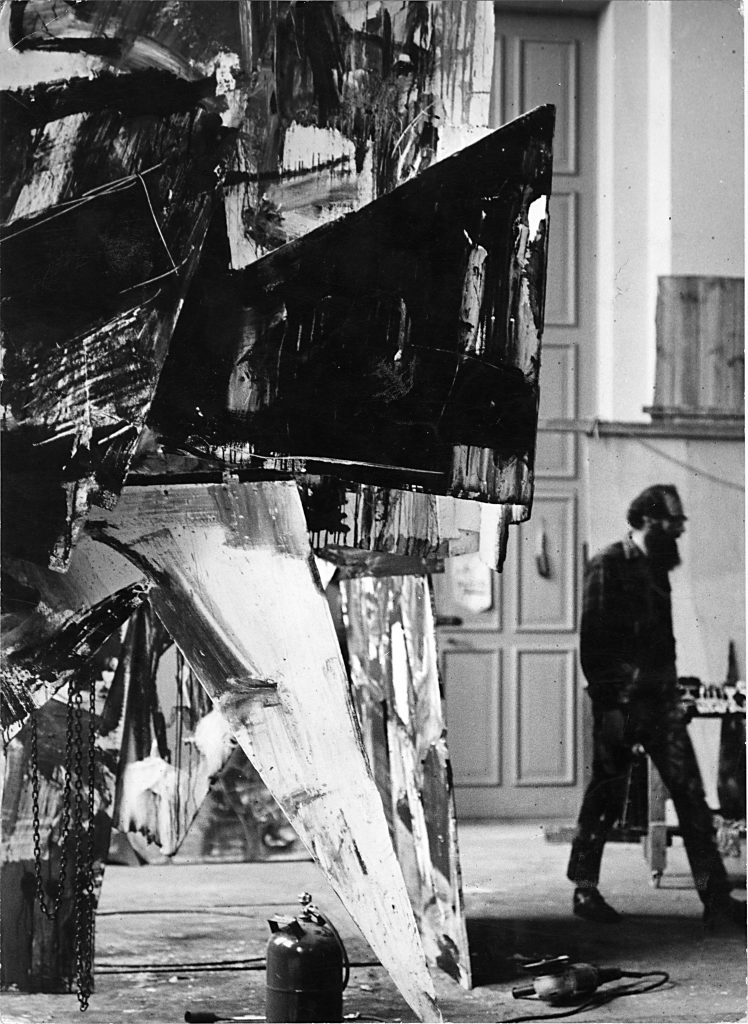From 1945 until today
Following the end of the Second World War, the former studio of Arno Breker was first occupied by Russian units and later by American occupation forces as a storage space for the PX shop (store for members of the military administration). After the Americans left the building, ownership was transferred to the municipal administration in 1946 and it was used by the Berlin professional association of stonemasons. Kurt Reutti, an employee of the Zentralstelle zur Erfassung und Pflege von Kunstwerken (Centre for the documentation and care of artworks), also suggested making parts of the studio available to “important sculptors for the execution of larger sculptural works”. Bernhard Heiliger (1915–1995) thus moved into the east wing of the building in 1949. Heiliger was one of the most important sculptors of West German post-war modern art. A representative selection of his works can be found today in the garden of the Kunsthaus Dahlem. The Bernhard-Heiliger-Stiftung, founded following the death of the artist, has been based here since 1996.
Emilio Vedova was the first international artist to occupy the central part of the studio building in 1964/65. Among other works, Vedova created his major painting installation Absurdes Berliner Tagebuch (Absurd Berlin Diary) (1964) here. The work was exhibited in 1964 at documenta III and in 1965 in the Haus am Waldsee in Zehlendorf. The artist endowed it to the Berlinische Galerie in 2002.
The Brücke Museum was constructed by the architect Werner Düttmann on the neighbouring property in 1966/67. The central studio previously used by Vedova was divided into eight smaller studios in 1971/72, which were subsequently administered by the German Academic Exchange Service (DAAD) and the Kultursenat (Culture Senate) of Berlin. Renowned artists such as Armando, Ouhi Cha, Jimmie Durham, Dorothy Iannone, Jean Robert Ipoustéguy, Emmett Williams, Zhu Jinshi and Qin Yufen had workspaces here.
Well-known artists also worked in the west wing of the building in the 1980s and 1990s. Wolf Vostell (1932–1998), a co-founder of the Fluxus movement, was active from 1984 until his death in the former stone studio, in which the café is now located. After 1998, the DAAD made the former plaster studio facing the street available to, among others, the Canadian artist Jimmie Durham and his wife Maria Thereza Alves.
Following the conversion and partial demolition of the studio building in 2014–2015, the Kunsthaus Dahlem opened in 2015 as an exhibition institution for post-war German modern art from East and West Germany.
 © Kunsthaus Dahlem, Studio view Emilio Vedova
© Kunsthaus Dahlem, Studio view Emilio Vedova